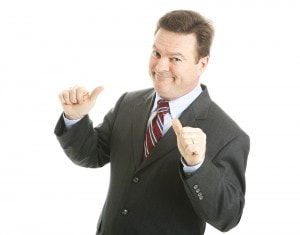
6 Ways to Power Up Your Marketing Message
Is your marketing message strong enough to beat your competitors in the year ahead? Here are six ways to power up your marketing message.
To win over your audience, power up your marketing message by creating a Message Map.
In a Message Map, your main message is called home. It performs the job of answering audience’s first question first: What’s in it for me? (WIIFM?) A home is a safe place to which you can always return.
Smart marketers put audience needs first
Marketers who put their audience’s needs first are more likely to succeed, research from the Content Marketing Institute (CMI) found.
About two out of three content marketers (65%) always or frequently prioritize the audience’s information needs over their organization’s sales and promotional message, consumer marketers said in the 2022 CMI research.

To power up your marketing message, you must put your audience first.
Unfortunately, many marketing messages take the opposite tack. Brands seize the megaphone to talk about themselves, instead of addressing what people in the audience need.
If your audience responds to your message with, “So what? Who cares?” then you need to power up your message.
Avoid self-centered messages

A Forrester survey of business-to-business marketers found that most marketers take a brand-centered approach to messaging. For example:
- Nine out of ten of marketers admit their home pages talk primarily about themselves.
- Only one in four mirrors the language of audiences and decision-makers.
- Only one in eight marketers uses a narrative story, walks buyers through a persuasive argument, or shows empathy for customers.
But bragging doesn’t build brands in the eyes of customers.
6 ways to power up your message
1. Is your message concrete or abstract?
Concrete words help audiences picture what you say. The best home messages paint a sensory picture in the minds of your audience because you use concrete nouns and active verbs.
People recognize concrete words faster and remember them better, a response neuroscientists call “dual coding.” Paint word pictures with your message to activate two semantic networks in people’s brains.
2. Is your message positive or negative?
It’s risky to use negative words in your home message. Here’s why.
“If I put you into an fMRI scanner, take a video of neural changes happening in your brain – and flash the word ‘NO’ for less than one second, you’d see a sudden release of dozens of stress-producing hormones and neurotransmitters.
“These chemicals immediately interrupt the normal functioning of your brain, impairing logic, reason, language processing and communication,” wrote Andrew Newberg, M.D., and Mark Waldman in Psychology Today. Negative words undermine your audience’s trust and cooperation.
3. Is your message emotional or rational?
People make decisions based on emotions. Purely rational arguments fail to move audiences. Why?
Because people are fundamentally intuitive, not rational, social psychologist Jonathan Haidt found. His insight is this: when you want to persuade others, you must appeal to their sentiments, not only their reason.
Advertising research finds that emotional ads are twice as effective as rational ads. Ads that were more emotional lifted sales by 23%, Nielsen found. Emotional ads create preferences and lead to decisions.
4. Is your message clear or confusing?
To make your message crystal-clear, use the words that the nonexperts and laypersons in your audience understand.
Speak in a language that’s familiar to your audience. Avoid acronyms and jargon. Speak plainly, not over people’s heads.
Take care to avoid the curse of knowledge, the inability to explain a topic in plain words to a nonexpert. The more expert you are in your field, the harder it will be for you to overcome the curse of knowledge. Here’s how.

5. Is your message concise or lengthy?
Today’s media have conditioned people to send and receive short messages. The average sentence in news media is only seven seconds long, about 23 words.
Hook your audience in the first seven seconds, and you’re much likelier to get them to stick around for two minutes, 20 minutes, or more. Here are examples of 7-second Message Maps that work.
Your seven-second Message Map gives you headlines, email subject lines, social media posts, a sound bite for news media, and your elevator speech. It packs a lot of punch into seven seconds.
6. Is your message consistent or inconsistent?
Consistency in your message builds credibility in the hearts and minds of your audience. When you deliver one message consistently over a long period of time, in different media, through different spokespersons, you make your message even more credible.
McKinsey’s study The Three C’s of Customer Experience: Consistency, Consistency, Consistency found: “The number one trait of companies that succeed in delivering a superior customer experience is the ability to develop and deliver a clear, consistent message. It may not seem sexy, but consistency is the secret ingredient.”
Make the most out of your home message!
Keep it concrete, positive, emotional, clear, concise, and consistent to win the hearts and minds of people in your audience. That’s how you can power up your message for the year ahead!

